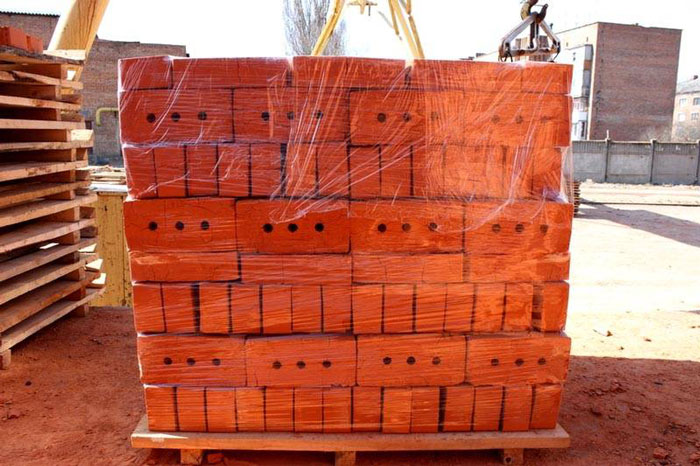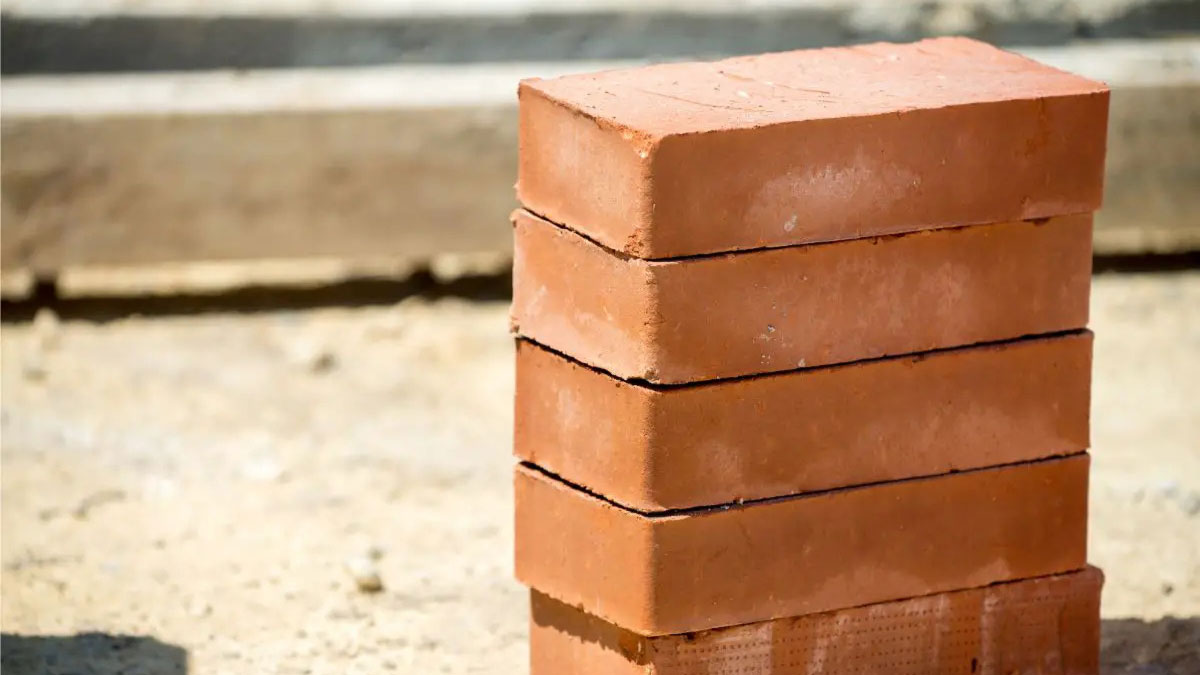How Much Does a Brick Weigh? Complete Guide
The weight of a brick varies significantly depending on its type, material, and dimensions. A standard red clay brick typically weighs around 4.5 pounds (2.04 kilograms)[2]. However, this is just one of many brick varieties available for construction and other purposes.
Standard Brick Weights
The most common brick size measures 3-1/2″ x 2-1/4″ x 7-5/8″, which is considered the standard modular brick[2]. Here are the typical weights for common brick types:
Clay and Red Bricks
- Standard red brick: 4.5 pounds (2.04 kg)[1]
- Modular brick: 4.2 pounds (1.90 kg)[1]
- Engineering bricks: 1.95-3.30 kg[1]
Specialty Bricks
- First class bricks: 3-3.5 kg[1]
- Fly ash bricks: 2.8-3.3 kg[1]
- Fire bricks: 3.5 kg[1]
- Sand lime bricks: 1-2.4 kg[1]
Brick Types and Their Weights
Different brick types serve various construction purposes and consequently have different weights. Here’s a comprehensive comparison table:
| Brick Type | Weight (lbs) | Weight (kg) |
|---|---|---|
| Modular | 4.2 | 1.90 |
| Standard | 4.5 | 2.04 |
| Jumbo Modular | 5.1 | 2.31 |
| Queen | 5.6 | 2.54 |
| Norman | 6.5 | 2.95 |
| Utility | 10.2 | 4.63 |
| Double Utility | 21.0 | 9.53 |

Factors Affecting Brick Weight
Several key factors contribute to the variation in brick weights across different types and manufacturers.
Material Composition
The primary materials used in brick manufacturing significantly impact their weight:
- Clay Bricks: Made from natural clay, these bricks typically weigh 4.3-4.7 pounds depending on clay composition.
- Concrete Bricks: Generally heavier than clay bricks, weighing 5-8 pounds due to their dense composition.
- Engineering Bricks: Specially manufactured for high strength, weighing 4.3-7.3 pounds.
Manufacturing Process
The production method affects brick density and weight:
Fired Bricks
- Kiln-fired at high temperatures (1,800°F-2,400°F)
- Results in more consistent weight
- Lower moisture content
- Higher density
Unfired Bricks
- Air-dried or sun-dried
- More variable weight
- Higher moisture content
- Lower density
Moisture Content
Moisture significantly impacts brick weight:
- Dry bricks weigh 4-5% less than wet bricks
- Saturated bricks can weigh up to 8% more than dry bricks
- Weather exposure affects weight fluctuation
Size Standards
Standard brick sizes vary by region:
| Region | Length | Width | Height |
|---|---|---|---|
| USA | 7-5/8″ | 3-5/8″ | 2-1/4″ |
| UK | 215mm | 102.5mm | 65mm |
| Australia | 230mm | 110mm | 76mm |
Applications and Weight Considerations
Understanding brick weight is crucial for various construction applications and calculations.
Construction Load Calculations
Wall Load
- Single wythe wall: approximately 40 pounds per square foot
- Double wythe wall: approximately 80 pounds per square foot
- Load-bearing calculations must include:
- Mortar weight (adds 10-15% to total weight)
- Number of courses
- Wall height and length
Transportation Considerations
Pallet Loads
- Standard pallet: 500-516 bricks
- Total weight per pallet: 2,250-2,322 pounds
- Maximum stack height: 6 courses for stability
Shipping Calculations
| Transport Type | Maximum Load | Brick Quantity |
|---|---|---|
| Small Truck | 2-3 pallets | 1,000-1,548 bricks |
| Semi-Trailer | 22-24 pallets | 11,000-12,384 bricks |
| Container | 18-20 pallets | 9,000-10,320 bricks |
Labor Safety Guidelines
Manual Handling Limits
- Single brick carry: Safe for most workers
- Multiple bricks: Limited to 3-4 bricks per lift
- OSHA guidelines: Maximum 50 pounds per person for regular lifting
Environmental Impact
Carbon Footprint
- Heavier bricks require more energy to transport
- Manufacturing weight optimization can reduce:
- Transportation costs
- Carbon emissions
- Energy consumption
Specialized Brick Types and Their Weights
Architectural and Decorative Bricks
Face Bricks
- Weight range: 4.2-4.8 pounds
- Smoother finish
- Higher aesthetic value
- Used for exterior walls
Glazed Bricks
- Weight: 4.5-5.2 pounds
- Ceramic coating adds weight
- Water-resistant properties
- Decorative applications
Industrial and Heavy-Duty Bricks
Fire Bricks
- Weight range: 7-9 pounds
- High alumina content
- Heat-resistant properties
- Used in furnaces and kilns
Chemical-Resistant Bricks
- Weight: 6-8 pounds
- Dense composition
- Acid-resistant properties
- Industrial applications
Weight-Related Quality Standards
Industry Standards
ASTM Classifications
- Grade SW (Severe Weather): 4.4-4.8 pounds
- Grade MW (Moderate Weather): 4.2-4.6 pounds
- Grade NW (No Weather): 4.0-4.4 pounds
Testing Requirements
| Test Type | Weight Requirement | Tolerance |
|---|---|---|
| Compression | Min. 3000 psi | ±5% |
| Water Absorption | Max. 17% | ±2% |
| Density | 120 lbs/ft³ | ±3% |
Quality Indicators Based on Weight
First Class Bricks
- Uniform weight distribution
- Maximum weight variation: ±5%
- Consistent density throughout
Frequently Asked Questions About Brick Weight
Common Questions and Expert Answers
Q: How much does a pallet of bricks weigh?
A standard pallet of 500 bricks weighs approximately 2,250 pounds (1,020 kg), including pallet weight and packaging materials.
Q: Why do brick weights vary so much?
Brick weights vary due to differences in:
- Manufacturing processes
- Material composition
- Moisture content
- Regional standards
- Quality requirements
Q: How many bricks can one person safely carry?
Following occupational safety guidelines, workers should limit themselves to carrying 3-4 standard bricks at once, considering the average brick weight of 4.5 pounds.
Weight Calculation Tools and Methods
Volume-Based Calculations
Formula for Brick Weight Estimation:
Total Weight = (Length × Width × Height) × DensityDensity Reference Table
| Brick Material | Density (lbs/ft³) | Weight per Brick |
|---|---|---|
| Common Clay | 120 | 4.5 lbs |
| Engineering | 140 | 5.2 lbs |
| Concrete | 130 | 4.8 lbs |
| Lightweight | 100 | 3.7 lbs |
Moisture Weight Adjustment
To account for moisture content:
- Dry weight + (Dry weight × Moisture %)
- Example: 4.5 lbs + (4.5 × 0.08) = 4.86 lbs when saturated
Key Takeaways and Industry Best Practices
Essential Weight Considerations
The understanding of brick weight is crucial for:
- Construction planning
- Structural calculations
- Transportation logistics
- Labor safety protocols
Industry Recommendations
Best Practices for Weight Management
- Regular weight testing during production
- Proper storage to minimize moisture absorption
- Accurate documentation of weight variations
- Implementation of quality control measures
Future Trends
The brick industry is evolving with:
- Lightweight alternatives
- Sustainable materials
- Advanced manufacturing techniques
- Improved weight-to-strength ratios
Conclusion
Understanding brick weight is fundamental for construction success. While standard bricks average 4.5 pounds, variations exist based on type, material, and application. Proper consideration of weight factors ensures structural integrity and project efficiency.
Citations:
[1] https://justweighingstuff.com/what-is-the-weight-of-a-brick-in-kg/
[2] https://prepperpress.com/average-brick-weights-in-different-sizes/
[3] https://www.engineeringtoolbox.com/bricks-density-d_1777.html
[4] https://www.mpastructural.co.uk/typical-weight-building-materials
[5] https://chicagobrickco.com/how-much-does-a-pallet-of-bricks-weigh/
[6] https://sciencing.com/calculate-weight-brick-8296540.html
[7] https://pinehallbrick.com/frequently-asked-questions-brick/







